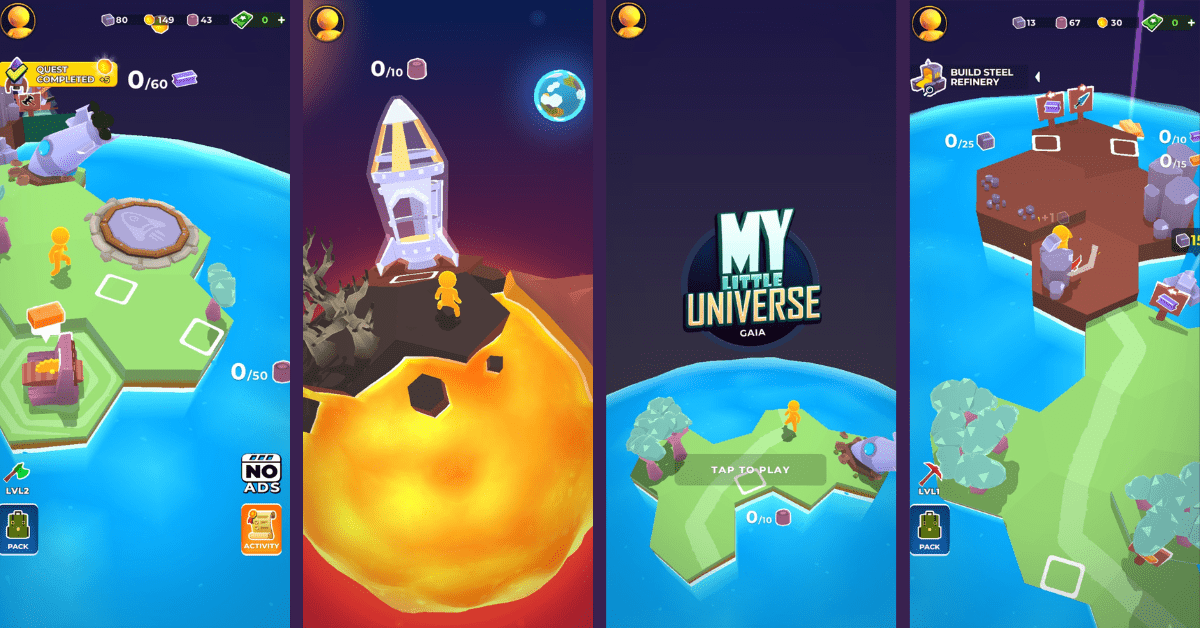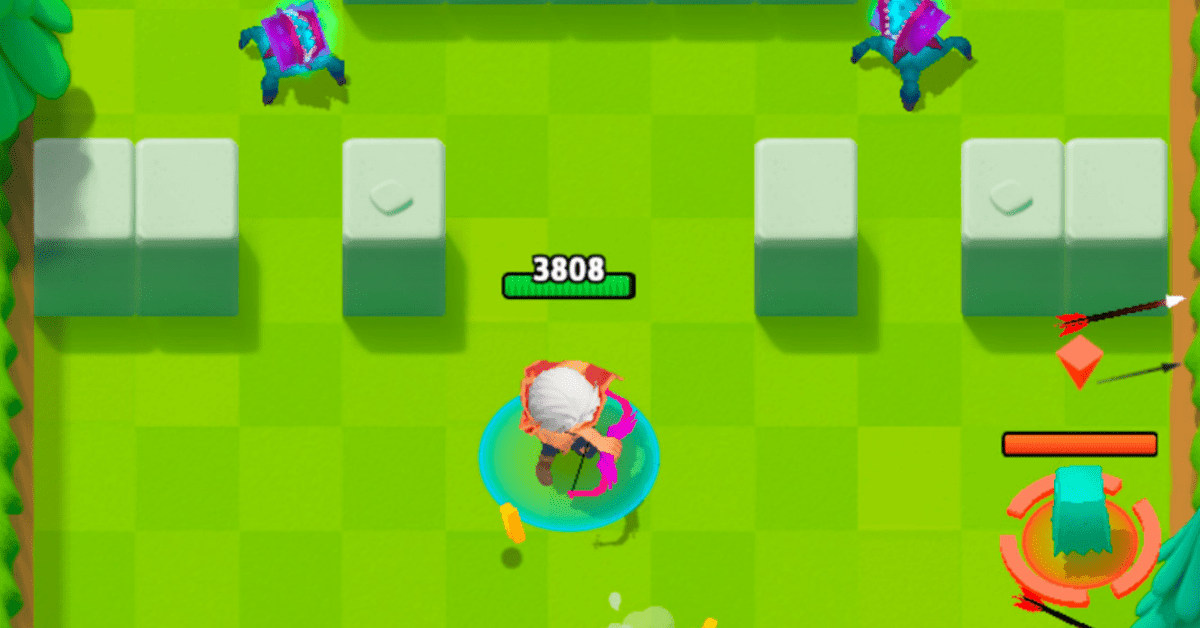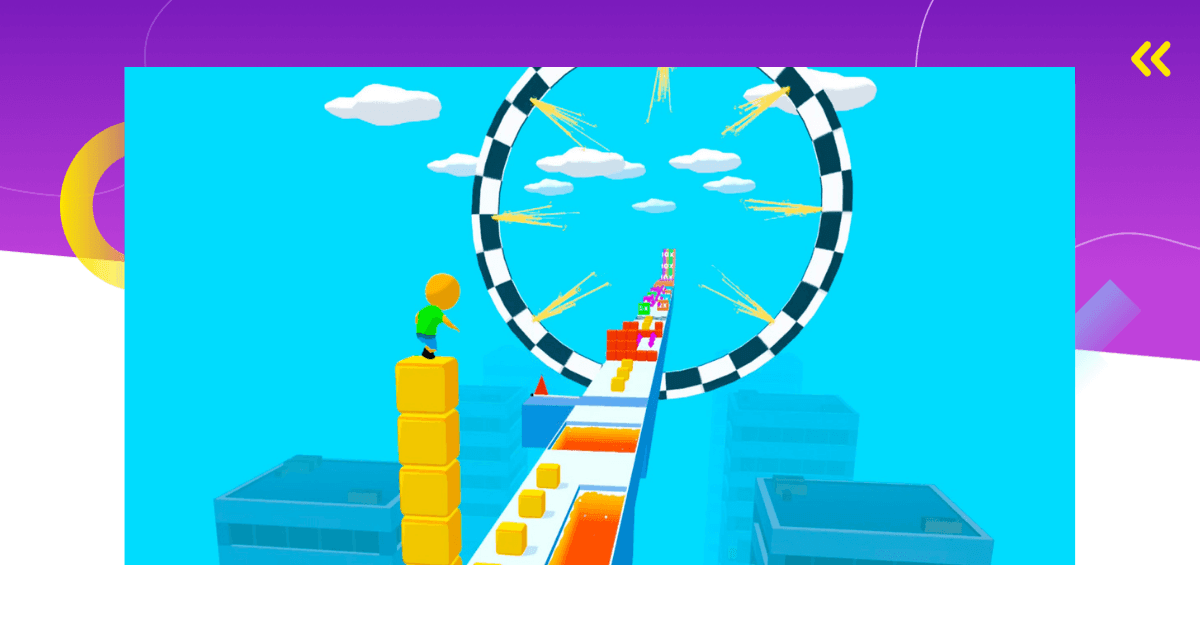When you dive into My Little Universe by SayGames, you’re immediately met with a unique blend of gameplay mechanics, monetization strategies, and user engagement tactics.
But what really makes this title stand out in a sea of mobile games?
In this dissection, I’ll break down key aspects of the game to understand its nuances and offer valuable insights into crafting a successful mobile game.
Taking the Hybrid-Casual Approach
SayGames is one of the best examples of a game studio that went all in on hybrid-casual and moved away from its hyper-casual roots. My Little Universe is one of the examples of their hybrid-casual approach, which has proven to be quite successful.
While there’s still room for growth on both the user acquisition and monetization front, this game is performing well.
Since its 2021 release date, it has been downloaded more than 30 million times and earned almost $10 million just in in-app purchase revenue alone. (Data source: AppMagic)
Here’s what makes it so good and which lessons you can take away from My Little Universe.

Exploring Main Game Mechanics in My Little Universe
The genre of My Little Universe can be described in many different ways – a casual world-building game, arcade idle game, sandbox adventure, god simulator, etc.
In it, players create their own planet tile by tile and are in charge of their own little universe. In other words, they play god. That includes gathering and managing resources, building, crafting, refining, exploring, fighting, and much more.
It’s not unlike RPG/strategy games, but simplified for a casual audience. That’s also reflected in how the game looks and feels. Instead of flashy graphics and a detailed world, My Little Universe has a stylized hyper-casual look with a stickman as the main character.
Core Gameplay Loop in My Little Universe
The core gameplay loop comes down to collecting resources – upgrading – expanding.
Just like in hyper-casual games, the controls are simple – players just need to move the stickman character around, while everything else is automatic. What’s more, My Little Universe is a straightforward game – there are clear instructions and signs that point to important areas in the game.
As a result, players can start playing right away and learn more as they go.
Here, you can notice that hybrid casual approach – the core gameplay is simple and anybody can understand it right away. But, as you’ll see in the following sections, there’s also complexity and depth to it, which keeps players engaged long-term.

Resource Gathering and Management
Resources in My Little Universe include items like wood, stone, azurite, amethyst, etc., and they’re used to expand the planet/universe and upgrade various tools.
For example, players can use wood to create additional wood tiles. Some new tiles, however, require more than one resource. For example, wood and stone.
What’s more, expanding certain areas, as well as upgrading tools, requires refined resources. As players build their planet, they have the ability to build various refineries. Players can use them to refine a resource into another resource. For example, logs into planks.
As the game progresses, players need to use an increasing number of different resources and decide how to use them. For example, whether to use wood to create new tiles, refine it into planks, or upgrade a tool. This is where resource management becomes an essential aspect of gameplay.
Also, the constant addition of new resources is used to increase complexity as players progress through the game. These new challenges keep players on their toes and make My Little Universe engaging long-term.

Upgrading
As I mentioned, players can use resources to upgrade their tools and weapons. This is an essential part of core gameplay because it allows players to make more progress and do it faster, as better tools equal less time to gather resources. Also, some resources require tools of a certain level.
Besides resource-gathering tools like the pickaxe and axe, players also get a sword for combat. A unique addition to the gameplay is enemies that spawn on the map. However, the combat is not that exciting and often feels like an afterthought.
As the enemies become stronger, players of course need to upgrade their weapon.
Later on in the game, the stickman in My Little Universe also gets armor (helmet, chestplate), as well as a pet and a horse.
This upgrading feature is essentially a gear and equipment progression system, which is key for user engagement and retention. This is what separates hybrid-casual games from traditional hyper-casual and casual games.

Expanding and Exploring
The final aspect of My Little Universe’s core gameplay is building and expanding the planet. It’s the final piece of the puzzle.
Players achieve expansion by using resources to create new tiles. That allows them to discover and explore new areas, resources, and enemies. For example, at one point in the early game, players unlock mushroom tiles and are met with fungus men.
There’s always something new waiting around the corner.
But that’s just the beginning, the big goal is to repair the rocket and explore new planets.
This is what drives players forward and provides them with both short-term and long-term goals. It’s one of the main progression systems in this world-building game.

Quests, Tasks, and Daily Activities
To maximize player engagement and retention, My Little Universe utilizes a quest and task system.
For example, build a plank refinery or upgrade the pickaxe.
These features are also what makes this game easy to follow and simple to play. In other words, they provide guidance to the player, making the game accessible to all types of players.

There are also daily activities designed to motivate players to check in with the game every day and keep engagement levels up. The activities include things like farming resources, killing monsters, refining resources, opening tiles, exchanging resources, etc. After players complete these daily activities, they can claim rewards.
What’s more, there’s an option to boost rewards by watching ads in exchange. But more on that in the following section.
My Little Universe: A Hybrid Monetization Strategy
Like most hybrid games, My Little Universe takes advantage of the hybrid monetization strategy. This diversification of revenue streams is what tends to make hybrid-casual games more profitable than hyper-casual games in the long term..
More specifically, My Little Universe employs ads, in-app purchases, and even a subscription model.
Let’s examine how these methods work together to create a monetization strategy that caters to all types of player segments.

In-App Ads
An ad-based monetization strategy is what most hyper-casual games employ. My Little Universe keeps that approach but puts a bigger focus on rewarded video ads.
The strategy behind them is not particularly innovative – it’s what most games do. What it boils down to is offering players to watch ads in exchange for quicker progress, whether it’s through getting resources, building refineries faster, or increasing refinery speed.
Gathering resources and progressing through the game is quite slow. Watching rewarded ads speeds up that process significantly, which is what makes them so attractive. So instead of spending 10 minutes to mine enough resources, players can get it in less than a minute.
Along with rewarded ads, which are choice-based, i.e., players choose whether to interact with them, My Little Universe also displays interstitial and banner ads.
The banner ads are present on the bottom of the screen throughout the gameplay, while interstitial ads appear throughout gameplay, usually when a new tile is created, which is a somewhat natural break point.
While ads are necessary for a successful hybrid monetization strategy, as they allow developers to monetize users who might not make a purchase, as well as to monetize players more quickly, it’s essential to not overdo it.
The ads in My Little Universe are just on the edge of being too frequent and too long, which might turn away some players. Also, they’re often buggy, the exit buttons are sometimes hidden or hard to locate, and overall it’s not a particularly good experience.
However, that makes the ‘No ad’ offer that much more appealing.
Let’s talk about how in-app purchases fit into My Little Universe’s hybrid monetization strategy.

In-App Purchases
At the heart of My Little Universe’s game economy are two types of virtual currency: coins and Universe Bucks. While coins are soft currency earned through regular gameplay, Universe Bucks are premium currency and require real-world currency to acquire. There are four Universe Bucks offers total, at different price points (from roughly $4 to more than $60), catering to all types of spenders.
There’s also an element of trade in the game; players can exchange their accumulated resources for coins, establishing a dynamic, player-driven economy within the game.
Coin chests, which refill every couple of minutes, provide a continual stream of currency, which encourages players to remain engaged. The mechanic here is simple but effective: regular intervals of free coins incentivize not just longer play sessions, but also more frequent interactions with the game throughout the day.

No Ads and Starter Packs
Now let’s talk about the game’s main IAPs. The game offers a ‘No Ads’ option for $5.99, which suddenly becomes quite appealing, given the game’s somewhat intrusive ad strategy. It’s not just a way to improve the player’s experience; it’s a calculated move to convert ad-averse users into paying customers.
According to SensorTowers, this is the game’s most popular IAP offer, which comes as no surprise.
Additionally, once players reach a specific point in the early game, a Starter Pack offer emerges. This package is designed to expedite progress. It offers a quick boost to keep players engaged and invested. Also, starter packs tend to be very generous and are geared towards new players, which encourages players to make their first purchase.
A classic strategy, but effective nonetheless.
The Starter Pack is the fifth most popular IAP in My Little Universe, according to SensorTower.
Special Offers and Bundles
Besides the no ads offer and starter packs, My Little Universe offers many other packs and bundles, many of them themed.
One particular standout is the Werewolf Pack, priced at $9.99. This bundle includes weapons, increased stats, and tokens to progress further in the game. Oh, and it also lets players skip ads for a week. It’s a multi-faceted package that speaks to a variety of player needs and desires, from progression to convenience.
The option to change character also appears early on in the game, allowing players to customize their avatar and make their experience more personalized.

Subscription
On top of ads and IAPs, My Little Universe offers a VIP membership, which is a type of subscription that offers players tons of additional benefits. It’s perfect for engaged players who want to get the most out of this game and don’t mind spending on it.
Just to give you an idea of the perks, VIP members get free daily resources, a VIP avatar, the ability to get resource piles without watching an ad, 2x faster refineries, and no forced ads and banners.
The 7-day membership costs 6.24 euros, which is about $7, while the 30-day subscription is priced at 25,08 euros, or roughly $27.
Overall, it’s a great addition to My Little Universe’s monetization system, making it well-rounded and appealing to players of various spending habits.
My Little Universe: Final Thoughts & What Could Be Improved
In terms of a hybrid-casual game, My Little Universe does many things right. It balances simple game mechanics with traditionally mid-core features – a combo that has the power to significantly extend playability.
However, the game’s downloads and revenue are stagnating a bit and could be boosted.
I think My Little Universe would benefit a lot from adding a storyline. The game already has RPG elements, different planets, and a unique environment, and a narrative would tie all of it together and give players an additional way to engage with the game without messing with the core gameplay.
A narrative meta-layer would also make quests and exploration have more meaning and create more excitement, which could also contribute to overall engagement and potentially open up some additional monetization avenues.
What do you think? Would a storyline make My Little Universe more engaging? Let me know in the comments!







Comments